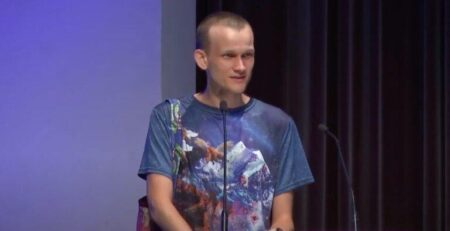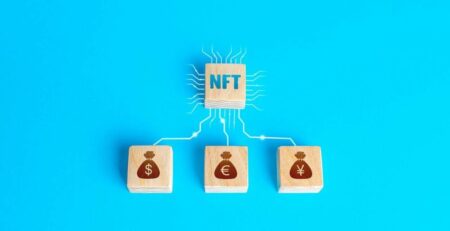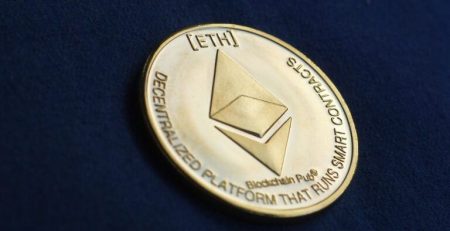$ETH: Lark Davis Highlights Five Important Facts About Ethereum’s Merge Upgrade
On Sunday (August 28), highly popular New Zealand based crypto analyst pointed out five interesting facts about Ethereum’s upcoming “Merge” upgrade, which marks the Ethereum network’s transition from proof-of-work (PoW) to proof-of-stake (PoS).
Here is how Ethereum Foundation explains the Merge, which is expected to take place around September 15:
“The Merge represents the joining of the existing execution layer of Ethereum (the Mainnet we use today) with its new proof-of-stake consensus layer, the Beacon Chain. It eliminates the need for energy-intensive mining and instead secures the network using staked ETH. A truly exciting step in realizing the Ethereum vision – more scalability, security, and sustainability.
“It’s important to remember that initially, the Beacon Chain shipped separately from Mainnet. Ethereum Mainnet – with all it’s accounts, balances, smart contracts, and blockchain state – continues to be secured by proof-of-work, even while the Beacon Chain runs in parallel using proof-of-stake. The approaching Merge is when these two systems finally come together, and proof-of-work is replaced permanently by proof-of-stake.
“Let’s consider an analogy. Imagine Ethereum is a spaceship that isn’t quite ready for an interstellar voyage. With the Beacon Chain, the community has built a new engine and a hardened hull. After significant testing, it’s almost time to hot-swap the new engine for the old mid-flight. This will merge the new, more efficient engine into the existing ship, ready to put in some serious lightyears and take on the universe.“
Earlier today, Davis took to Twitter to highlights the followings about the Merge:
- “It will reduce Ethereum’s energy consumption by around 99.9%”
- “There will be a 90% reduction in annual creation of new Ethereum coins”
- “The fees are not going to go down immediately, likely not till late 2023.”
- “Ethereum will become deflationary thanks to its perpetual burn mechanism.”
- “The merge will mark about the halfway point towards the final version of Ethereum on the Ethereum roadmap.”
As for his final verdict on the Merge, he said “basically HODL and chill.”
In the August 2022 issue of Pantera’s monthly newsletter (which is called “Pantera Blockchain Letter”), Erik Lowe, Head Of Content at Pantera Capital, he first explained why Ethereum’s next major protocol upgrade is called the Merge and then went on to explain the effect of the Merge on $ETH issuance and supply:
“If you were wondering why the event is called ‘The Merge’, it is in reference to the ‘merging’ of the Ethereum Mainnet (execution layer) with the Beacon Chain (consensus layer) that has been running in parallel since December 2020. The Ethereum that facilitates our DeFi transactions today is the execution layer, which runs on Proof-of-Work. The Beacon Chain utilizes Proof-of-Stake. The merging of the two is when Ethereum transitions to Proof-of-Stake. So how does this relate to issuance and supply?
“Currently, the issuance of new Ethereum is about 14,600 ETH/day, which is the aggregate of 13,000 ETH from mining rewards on Mainnet and 1,600 ETH from staking rewards on the Beacon Chain. After ‘The Merge’, there will be no Proof-of-Work and thus no mining rewards, leaving just 1,600 ETH/day in staking rewards.
“A year ago, the London upgrade went live, which introduced a minimum fee (known as a base fee) for every transaction to be considered valid. That fee is then burned, resulting in approximately 1,600 ETH removed from the total supply each day based on an average gas price of 16 gwei, according to the Ethereum website. (A gwei is one-billionth of one ETH.)
“After ‘The Merge’, Ethereum’s issuance rate of 1,600 ETH/day in staking rewards minus the fees burned nets out to zero. Subtracting penalties incurred by validators (e.g. getting slashed for misbehaving) and ETH that is lost over time, this would make Ethereum issuance net negative. In the context of today’s inflationary environment, Ethereum’s shift towards a potentially deflationary asset is an exciting prospect.“
On August 22, blockchain technology company ConsenSys took to Twitter to examine the five common misconceptions about the Merge:
- “The Merge will create another Blockchain, called ETH2. The Merge will not create a new blockchain, but will make the current ETH network more energy efficient, secure, and in the future, more scalable.“
- “The Merge will create a new ETH token, ETH2. There is no ETH2 token. Avoid sending ETH to anyone in attempts to upgrade to ETH2.“
- “ETH Transactions Will Cost Less Post Merge. The Merge does not target gas fees, it is aimed at making the network more secure and easier to scale.“
- “Validators Will Be Able to Immediately Withdraw their staked ETH. It is estimated,that validatiors will be able to take out their staked ETH in 6-12 months post Merge.“
- “The Merge Will Hamper the Security of the ETH Network. The Merge will enhance the security of ETH by democratizing network participation.“
Image Credit
Featured Image via Pixabay












Leave a Reply